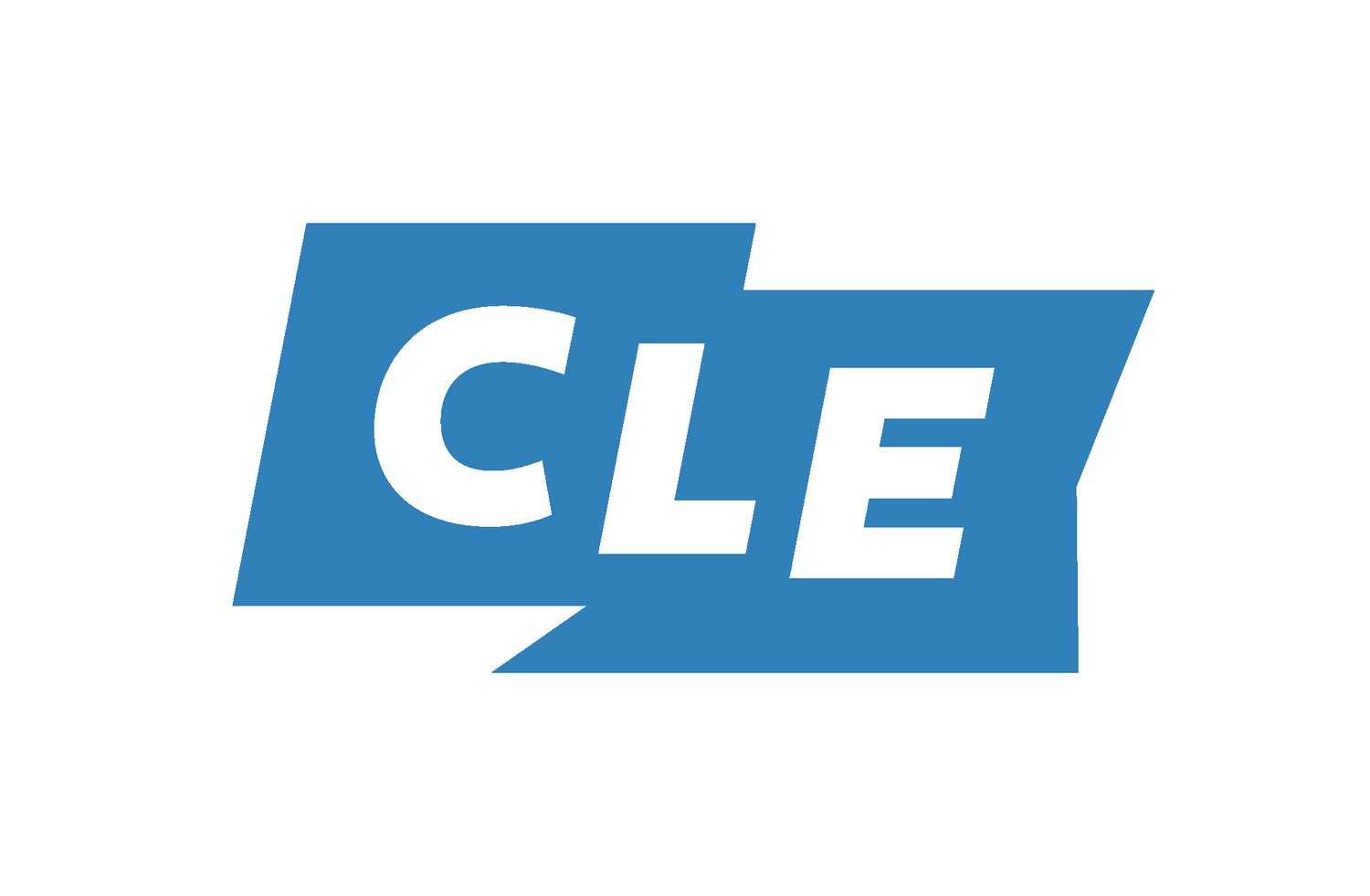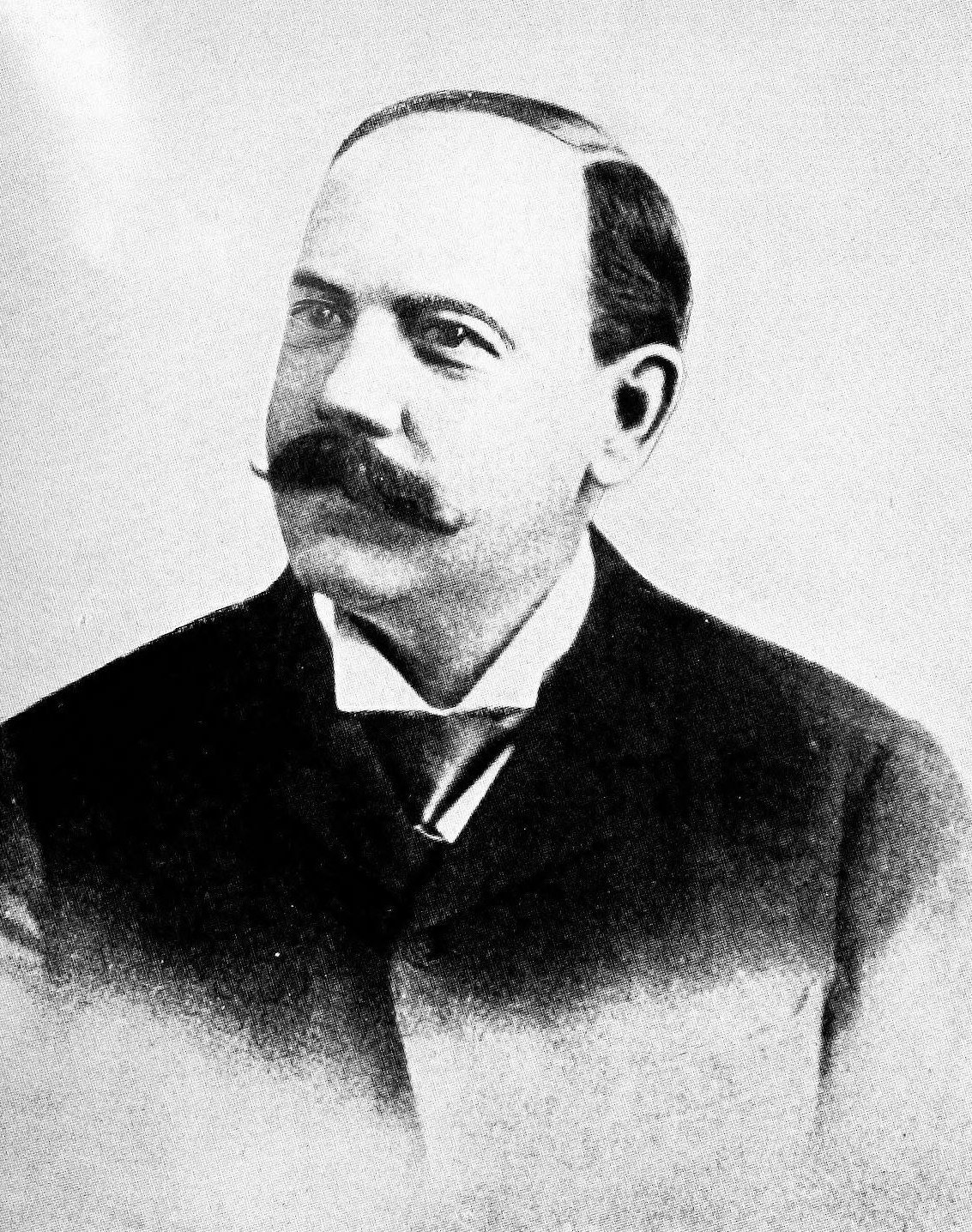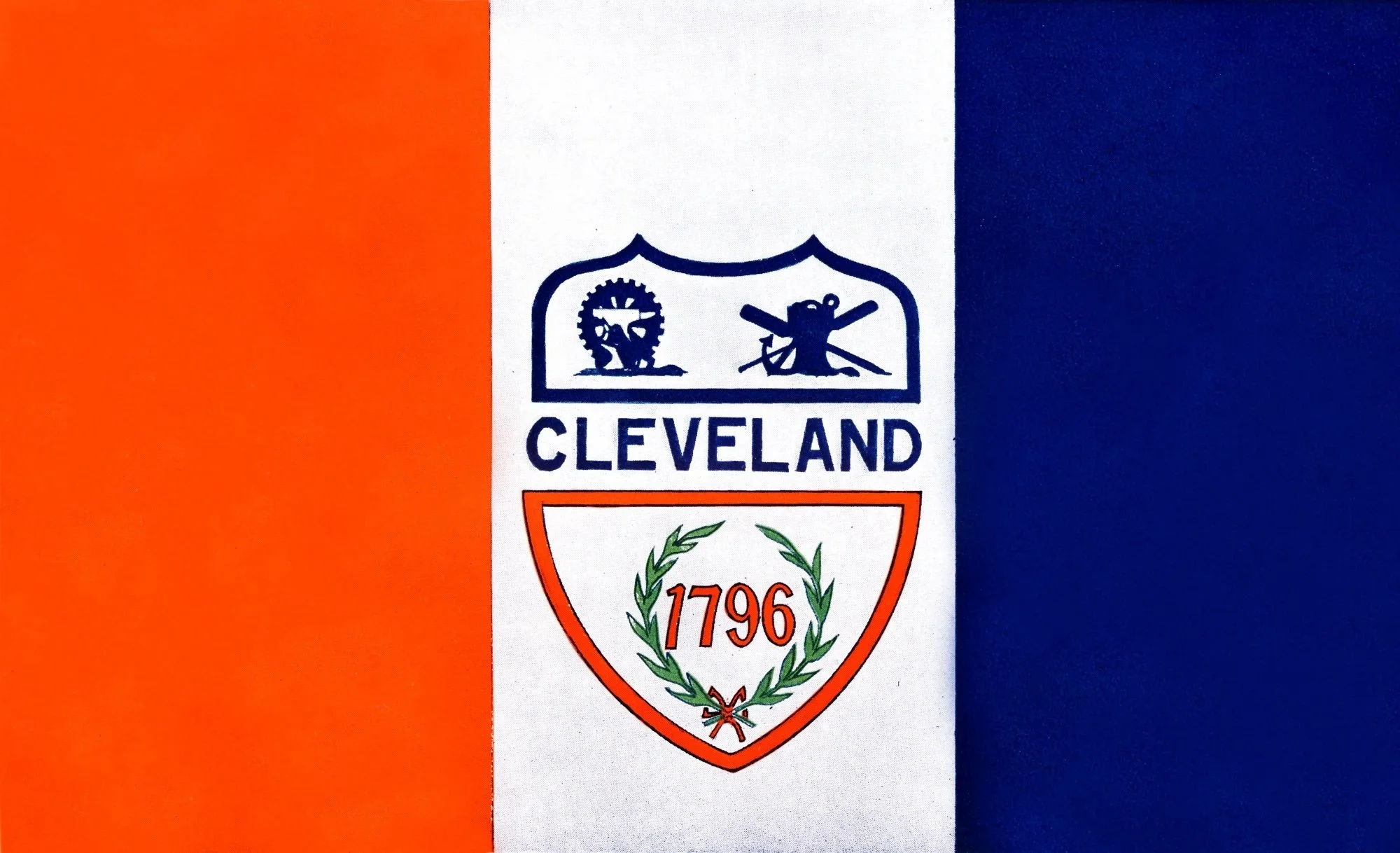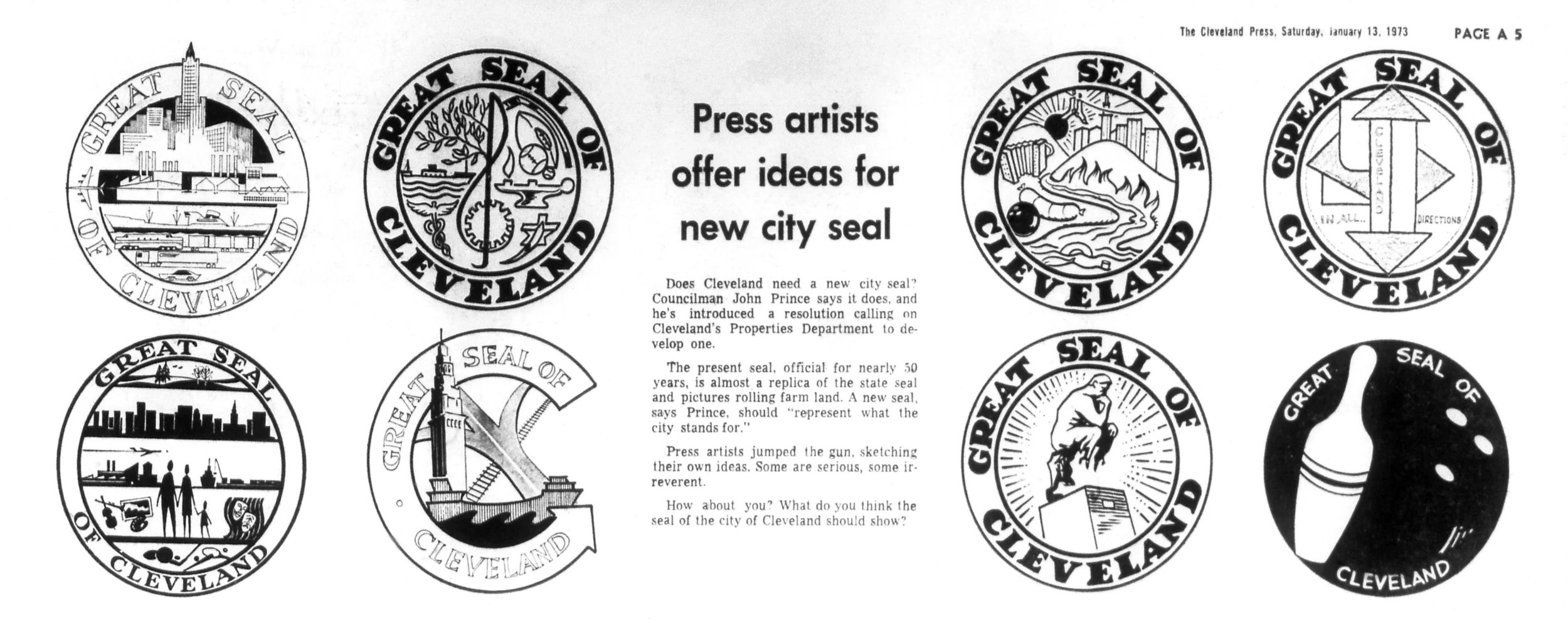
CLEVELAND SYMBOL HISTORY
Adopted in 1895, the official municipal symbols for Cleveland include the city’s flag, motto, and ceremonial seal. The city’s flag came to be when New York journalist, Julian Ralph, proposed the idea to William Stokely, a reporter with The Plain Dealer. After visiting Cleveland, Ralph was impressed with the city’s civic spirit and was surprised a city flag did not already exist. Soon after his suggestion to design the first Cleveland flag, the city’s civic and business leaders enthusiastically joined the pursuit. On the eve of Cleveland’s centennial and following the path of Chicago and New York, the group set out to create the first municipal flag of Cleveland.
Image sourced from Wikipedia.
Image sourced from Gettysburg Flag Works.
To engage Cleveland citizens in the selection of the flag, Ralph, Stokely and city leaders held a municipal flag design contest through The Plain Dealer. In October of 1895, following two dozen submissions, 18-year-old Susan Hepburn was named the prize-winning designer. Hepburn was an art school graduate, a descendant of early Western Reserve settlers, and her grandfather was a member of Cleveland’s first city government.
Image sourced from Case Western Reserve University.
On October 21, 1895, Cleveland City Council voted unanimously to adopt Hepburn’s flag. The design included a vertical triband of red, white, and blue colors to express patriotism. A Cleveland shield is located in the middle white band and the shield’s top portion is outlined in blue with “Cleveland” separating the top and bottom. The top left uses symbols of an anvil, hammer, and wheel to represent the city’s growing industry. The top right uses symbols of an anchor, windlass, and oars to represent the importance and reverence of the city’s waterways. The shield’s bottom is outlined in red and the year “1796” is surrounded by a laurel wreath to honor the year Cleveland was founded by General Moses Cleaveland. Though the first version of the flag did not contain the motto ‘Progress and Prosperity’, it was added in November 1895 by Cleveland Mayor Robert McKisson. McKisson adopted this phrase as the city’s municipal motto amid contention from other city leaders and added it to the flag as well.
Image sourced from Case Western Reserve University.
The Plain Dealer municipal flag competition also included proposals for Cleveland’s municipal seal. Popular designs included seals that showcased the city as a female personification of liberty similar to New York’s Statue of Liberty. Other popular images in submissions incorporated ships, railroads, factories, representing Great Lakes commerce, growing industry, and civic progress the city was experiencing. Although some designs became popular after they were printed by The Plain Dealer in August 1895, citizens were surprised to learn that an Ohio state statute specified that municipal seals must be identical to the Ohio state seal. This changed in 1973 during the mayoral administration of Ralph Perk, when a seal was officially adopted.
Image sourced from The Cleveland Memory Project.
In January 1973, Cleveland Councilman John Prince made a push to change the municipal seal after arguing the rolling hills image of the seal did not represent Cleveland’s growing industry. Much like the design of the municipal flag, an “unofficial” contest to design the city seal was held through The Plain Dealer. Mayor Perk appointed the Cleveland Area Arts Council to run the contest and offered a $1,000 prize, though Mayor Perk and City Council would ultimately pick the winner. Over 80 applicants submitted designs with several entries printed in a special edition of The Plain Dealer dubbed “The Great Seal Hunt” in April 1973. One popular seal design included an image of a park bench in the shadow of Terminal Tower signifying racial harmony in a growing industrial city. Other popular seals included the city skyline with a flaming river and a seal combining an accordion, bowling ball, and kielbasa. In July 1973, a seal submitted by local artists John Nottingham and John Spirk was chosen by the selection committee.
Image sourced from Nottingham-Spirk on X.
On November 19, 1973, the city adopted the Nottingham-Spirk submission as a “ceremonial seal” with the following attributes: “The ceremonial seal of the City of Cleveland shall consist of a circular design divided into four quadrants. The upper left quadrant shall contain a stylized skyline of the City. The upper right quadrant shall contain a leaf and tree symbol. The lower left quadrant shall contain a symbol of meshing gears. The lower right quadrant shall contain a stylized water symbol. The circumscription surrounding the new seal shall read ‘The Great Seal of the City of Cleveland.’ The ceremonial seal is established and shall be used for ceremonial purposes only.”
Image sourced from National Civic League.
Before the selection of the seal was made official, Councilman Prince told residents the Nottingham-Spirk seal would be promoted throughout the city, but the image never came into common use anywhere. The Nottingham-Spirk seal was eventually replaced by the “American Flag” seal during the mayoral administration of Michael White. The new seal features five stars which represent each time Cleveland won the All-American City award from the National Civic League.
Image sourced from Flickr.
Besides the city’s official municipal symbols, unofficial city symbols have gained notoriety locally and nationally since the 1920s. Most notably, Cleveland’s Terminal Tower has become iconic in the city’s imagery and representation. More recently, The Cleveland Script signs created by Destination Cleveland located at Edgewater Park, North Coast Harbor, Tremont, Cuyahoga Valley, and North Shore Collinwood have gained popularity as areas with high civic engagement and the Cleveland Script lettering style has become recognizable city-wide.









